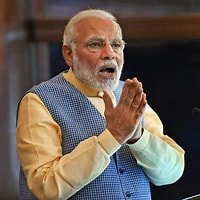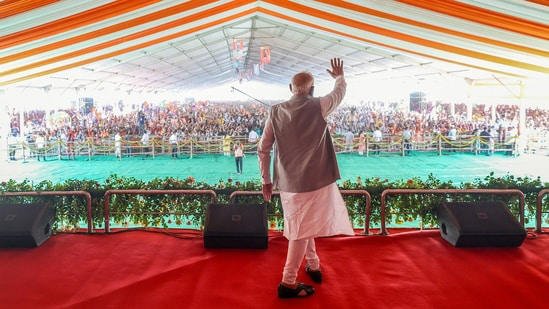Prime Minister Narendra Modi is set to embark on a three-day spiritual retreat to Kanyakumari from May 30 to June 1, following the conclusion of his intense Lok Sabha election campaign. This visit will be purely for personal rejuvenation, devoid of any political engagements, marking a continuation of Modi’s tradition of seeking spiritual solace after significant political events.
Significance of Kanyakumari and Its Historical Link to Swami Vivekananda
Kanyakumari, the southernmost tip of India, is a place of immense cultural and spiritual significance. It is renowned for being the confluence point where the Indian Ocean, Bay of Bengal, and Arabian Sea meet, symbolizing unity and diversity. This geographical uniqueness enhances its mystical allure.
The town holds a revered place in Hindu mythology. It is believed that Goddess Parvati, in the form of Kanyakumari, meditated here while awaiting Lord Shiva. This lore adds to the spiritual aura of the region, drawing numerous pilgrims and seekers of divine blessings.
However, Kanyakumari’s most prominent association is with Swami Vivekananda, one of India’s greatest spiritual leaders. In 1892, Swami Vivekananda meditated on a rock located about 500 meters off the mainland coast, now known as the Vivekananda Rock Memorial. It was here that he experienced a profound spiritual awakening and a vision of Bharat Mata, which profoundly influenced his mission for India’s spiritual and cultural rejuvenation. This site, often compared to Sarnath in its significance for Gautama Buddha, is now a beacon of inspiration for many.

PM Modi’s Visit to Vivekananda Rock Memorial
During his stay, Prime Minister Modi will meditate at the Dhyan Mandapam within the Vivekananda Rock Memorial. This memorial stands on the very rock where Vivekananda attained his vision for a developed India after three days of intense meditation. The rock itself is imbued with historical and spiritual significance, believed to have also been the meditation site of Goddess Kanyakumari.
The Vivekananda Rock Memorial features two main structures: the Sripada Mandapam and the Vivekananda Mandapam, reflecting an elegant blend of various architectural styles. The site also houses a life-sized bronze statue of Swami Vivekananda, making it a pilgrimage spot for many who seek inspiration from his life and teachings.
Modi’s Tradition of Post-Election Spiritual Sojourns
Prime Minister Modi is known for undertaking spiritual journeys at the conclusion of his election campaigns. These trips are seen as a means for him to reflect, rejuvenate, and seek spiritual guidance. After the 2019 election campaign, Modi visited Kedarnath, and in 2014, he paid homage at Shivaji’s Pratapgarh. These visits highlight his personal commitment to spirituality and his practice of seeking inner peace amidst the rigors of political life.
The Timing and Political Context
PM Modi’s visit to Kanyakumari comes at a crucial juncture. The final phase of the Lok Sabha elections, Phase 7, is scheduled for June 1, involving 57 parliamentary constituencies across eight States and Union Territories. Modi himself is contesting from Varanasi, facing off against Congress’s Ajay Rai. The timing of his retreat, right before the final phase and the subsequent vote counting on June 4, underscores his need for spiritual grounding and focus during this pivotal period.
Prime Minister Modi’s upcoming visit to Kanyakumari for a spiritual break not only underscores his personal affinity for meditation and reflection but also highlights the deep cultural and historical significance of the Vivekananda Rock Memorial. This retreat serves as a reminder of the timeless values and visions imparted by Swami Vivekananda, which continue to inspire millions, including leaders like Modi. As he meditates in the sacred space where Vivekananda once found his calling, Modi’s journey to Kanyakumari becomes a blend of personal solace and a tribute to India’s rich spiritual heritage.











